Being Polite ESL Games, Activities & Worksheets
So Polite!

ESL Could You Game - Speaking: Forming and Reforming Sentences, Miming, Freer Practice - Group Work
In this free polite requests game, students make polite requests with 'Could you..., please?' and respond with 'Thank you' and 'You're welcome'. In groups, students take turns picking up a card...
Perfectly Polite
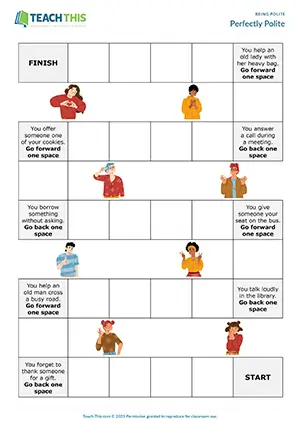
ESL Polite Expressions Board Game - Vocabulary and Speaking: Forming Sentences, Guessing, Freer Practice - Group Work
In this engaging polite expressions board game, students race to say polite expressions and requests that match different situations. In groups of three, one student...
Ask Me Nicely
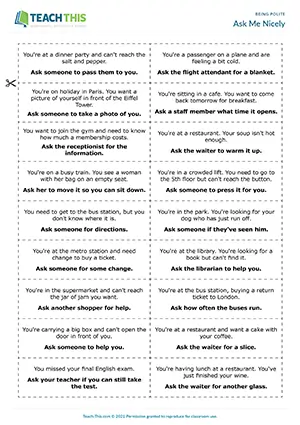
ESL Polite Requests Game - Speaking: Forming Responses, Communicative Practice - Group Work
In this imaginative polite requests game, students compete against each other to come up with polite requests for various situations. In groups, students take turns picking up a card and reading the...
Levels of Politeness
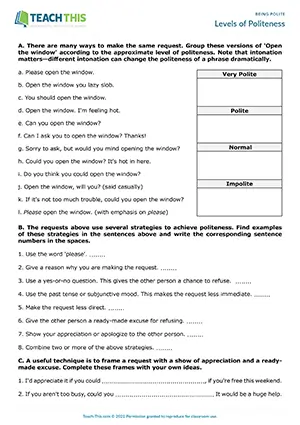
ESL Politeness Worksheet - Vocabulary Exercises: Categorising, Identifying, Gap-fill, Rewriting Sentences, Writing Questions
This useful being polite worksheet helps students learn how to achieve different levels of politeness in various situations. First, students categorise variations of the request 'Open the window' according...
I'm sorry to interrupt, but...

ESL Polite Interruptions Activity - Vocabulary Exercises: Gap-fill, Table Completion - Speaking Activity: Debating, Communicative Practice - Pair and Group Work
In this creative being polite activity, students review expressions for interrupting politely and then participate in mini debates to practice the expressions...
Polite Partners
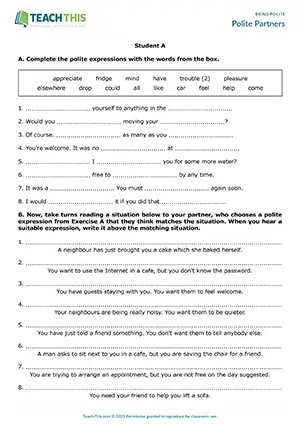
ESL Polite Expressions Activity - Vocabulary, Reading and Listening: Gap-fill, Matching, Dictation - Pair Work
Here is a rewarding being polite activity to help students practice commonly used polite expressions. First, working alone, students complete polite expressions with words from a box. Next, students take...
Polite Phrases
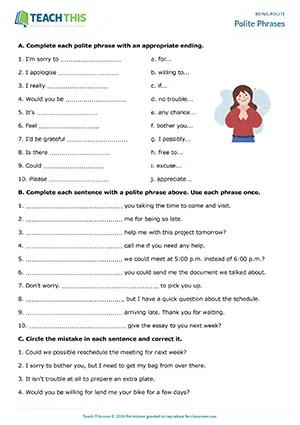
ESL Polite Phrases Worksheet - Writing and Vocabulary Exercises: Matching, Gap-fill, Error Correction, Binary Choice, Writing Sentences
This politeness worksheet helps students practice common polite phrases. First, students complete each polite phrase with its correct ending. Students...

